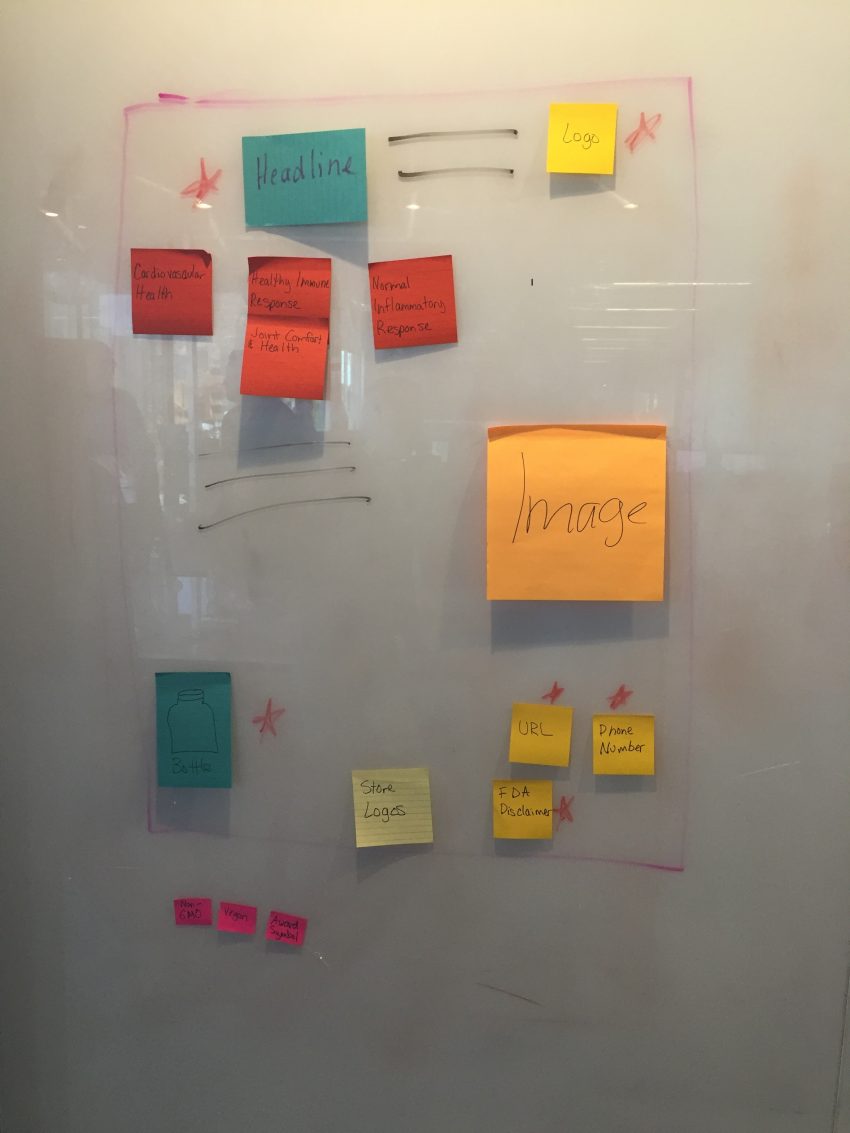As one of the Zion & Zion team members that has been trained at the Stanford d.school’s intense Design Thinking program, I always look for ways to incorporate this new model of thinking in my everyday work with clients. Design Thinking encourages you to look at problems from a different perspective, usually from that of your end customer. Design Thinking pushes you into new territory by coming at a problem from a wide variety of angles, some of which you may have never thought without a Design Thinking approach.
To highlight some practical applications for this model of thinking, I’ll showcase an example of how we utilize the Design Thinking process for clients at Zion & Zion. To start, I’ll give a brief overview of what Design Thinking is and the five phases that make up the process.
What is Design Thinking?
“Design Thinking is a human-centered approach to innovation that draws from the designer’s toolkit to integrate the needs of people, the possibilities of technology, and the requirements for business success.”
Tim Brown, CEO of IDEO
Design Thinking has become a popular term in the industry over the last few years as agencies and businesses look for ways to generate new and innovative ideas. Whether you’re looking to develop a new product, create the ultimate user experience (UX), think of a new ad campaign, or develop a promotional offer, using the phases of Design Thinking can help you get to a place you never expected to go, while helping you to ultimately create something meaningful and unique.
The Design Thinking process consists of five phases: empathize, define, ideate, prototype, and test. This process is typically carried out in a non-linear fashion, meaning you can follow all these steps in sequential order or just focus on one, depending on your needs at the time. These steps can also be repeated if, for example, you learn something during the testing phase that tells you to revisit the define phase.
Empathize – The empathy interview
A key part of Design Thinking is truly understanding what your audience needs. The best way to go about this is by exploring. Conducting empathy interviews with your target audience will give you insight into what’s important to them. It’s important to go into an empathy interview with an open mind as you aren’t looking to confirm an idea or insight, but rather develop one. An empathy interview should feel more like a conversation and less of an interrogation. For more information about hosting empathy interviews, read our article How to Conduct Empathy-Building Interviews.
To kick-off the interview, start with a topic or single question that you want to understand further. Ask your participant about their experiences as they relate to your topic. Follow their story and dig deeper with even more questions to get to the root of their thoughts and actions. Finding interesting areas to follow by focusing on the interesting or unexpected answers will get you the best information.
We did a practice exercise in empathy interviews that really shows how you can start with a simple question and come up with very unexpected ideas.
Define – Get a point of view
Once you’ve conducted your interviews, you want to unpack all the details, noticeable tensions, contradictions, and surprises. Take these nuggets of information and try to extrapolate an insight with the phrase “I wonder if this means…” Try coming to different conclusions until you find one that has the most potential. Once you’ve identified the one with the most potential, use it to create a point of view. Include who your subject was, what was surprising about them, what your insights were, and how you think that insight could be fulfilled. The goal is to frame a challenge that will generate a lot of ideas, not dictate a single solution.
Ideate – How to brainstorm
This phase is all about brainstorming. The ultimate goal is to take the challenge you created during the define phase and turn it into a new idea. You want to keep all possibilities on the table and encourage people to participate. Don’t say no to any idea. Instead, respond to an idea with “yes, and…” Once you notice the stream of ideas slow down, introduce some constraints to spur new ideas like “What if every idea has to involve magic or fantasy?” or “What if every idea had to cost at least $1 million dollars to create?”
At the end, determine which idea you think is worth moving into the prototype phase.
Prototype – Ideas need prototypes too
When you hear the word prototype, most usually think of an early phase of a product. The truth is, you can prototype anything: a product, an experience, or even a tagline. For the sake of Design Thinking, we aren’t talking about a fully functioning prototype, but rather something low-tech, typically constructed from materials such as construction paper, pipe cleaners, and masking tape. Your prototype doesn’t have to be a physical object, it can be an improv of what you anticipate the experience being like. The goal is to get across the idea of your prototype so you can get immediate feedback, rather than waiting until you think you have the perfect product to test.
Testing – Take it for a spin
It’s time to take your down and dirty prototype out into the field and share it with potential users. We recommend using the same tenants as the empathy interviews for feedback on your prototype. The goal of testing is to improve your idea. Often, we want to wait to share our idea or prototype until we think it’s close to being perfect. But oftentimes, there are things that you didn’t think of or anticipate that become apparent while testing. These insights can potentially help hone your idea. Who wants to go back to square one after thinking an idea was close to being finished?
A great exercise that teaches the importance of prototyping and testing is the Marshmallow Challenge. Zion & Zion conducted this exercise in-house to reiterate to everyone how important it is to test and fail. If you wait until the end of a project to test your great idea, you don’t have time to fix any issues.
Now that you have an idea of what Design Thinking entails, it’s time to talk about how you can apply it.
Prototyping with a client
We’ve all been in a situation where we felt it was tough to articulate what we were thinking. When working with clients, it can be especially difficult when they’re running into this obstacle. How can you get them something they want when they aren’t sure of what it is they want themselves?
When working on a new ad campaign for a client, we ran into this exact issue. The client had specific ideas and tastes that were hard for them to put into words, so we put together an interactive session with key team members of the agency and stakeholders. We then asked the client to be a part of prototyping a new ad layout.
Define – What you do and don’t like
We pulled together a selection of ads from other companies, both inside and outside the client’s industry. We taped all the ads onto a whiteboard and asked everyone in the room to choose their favorite three ads based on their initial thoughts and write them down on separate post-it notes. We then put each post-it next to the ad, so we could all see where there were concentrations of likes, as well as dislikes from the ones that didn’t get picked.
We led a discussion with the entire group about the reasons we liked the top contenders, getting into what about the design was attractive or eye-catching. Together, we came up a list of design pros such as the use of imagery, color contrast, simplicity, unexpected visuals, brightness, and familiar images. We also talked about the ads that we didn’t like and came up with a laundry list of design cons such as unconnected lifestyle imagery, clutter, and excessive copy.
Prototype – What’s in an ad?
The next part of our brainstorm consisted of prototyping the components of an ad. We drew a large rectangle on the whiteboard in our conference room to simulate the ad space and picked one product to use for our prototype. Next, we used post-its to represent elements of the ad. In the case for this client, we included elements like the bottle image, trust symbols, logo, URLs, etc. We thought of all the elements that might be in the ad and placed them inside the drawn-out rectangle to get an idea of how the final design would look.

With our recent design pros and cons in mind, we walked through the ad with the client to determine what was and was not necessary in order to cut down on clutter. We talked about the placement as well as the size of assets using different sized post-it notes to take up space. In the end, we came up with a general idea of what was truly necessary in terms of priority for the ad.
This involved a healthy discussion and a lot of moving pieces. We didn’t land on the answer right away, but instead tested the prototype internally to find the right answer for the client.
Results
From this prototyping session, we came up with three ad concepts the client loved, all of which had elements from our list of design pros from the brainstorm. Below is one of the three ads that we developed for the client.

Conclusion
Using the Design Thinking process doesn’t just apply to those who are creating a new product, service, or experience—and you don’t have to go through each phase to find value in the overall process. Take this new process and find ways to apply it in your daily work. Before you know it, Design Thinking will be a part of your everyday process.
One of the biggest things to take away from Design Thinking is not to be afraid of failure. Prototyping and testing is a cycle that’s meant to be repeated to help refine an idea, much like what we did with the ad concept—keep this in mind as you practice this process on your own. And finally, my last piece of advice for when you start to incorporate this into your life is to buy a lot of post-it notes.
